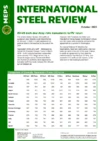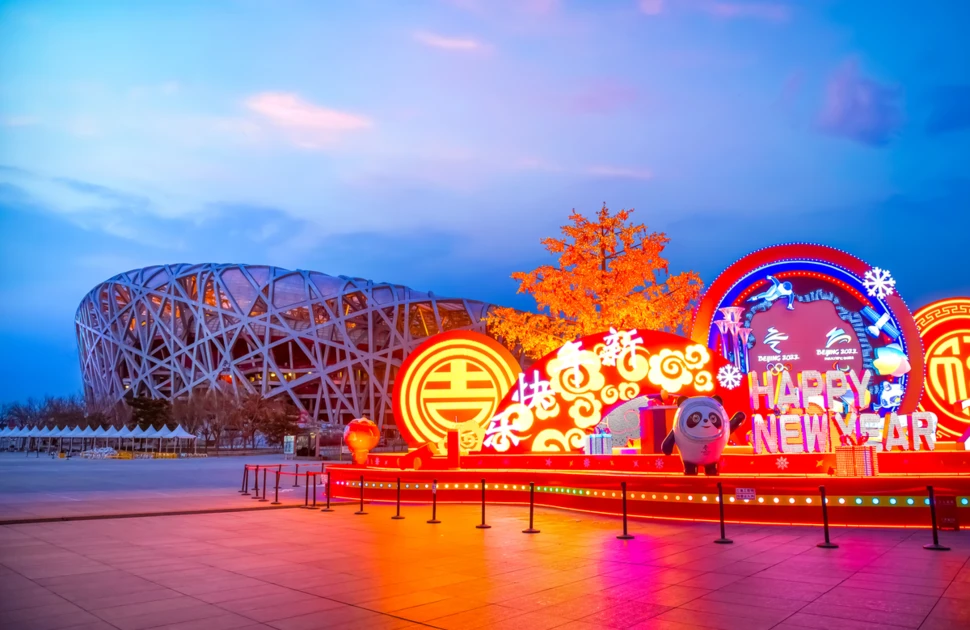Asian steel market forecast to strengthen post Olympics
Beijing has been at the centre of the sporting world as the Olympians donned their national colours during a two-week festival of winter sports.
The drama on snow and ice has unfolded in spectacular fashion in front of a global audience.
The eyes of the world were focused on China, and a similar situation is transpiring in the steel market.
The actions of China – a country which is responsible for half of global crude steel production – have a pivotal impact on the policies of steelmakers, worldwide.
A sharp fall in domestic demand, in the second half of 2021, did not result in a spike in volumes being shipped from China. The removal of the VAT rebate on exports and ongoing speculation about the introduction of an export tax contributed to this.
New Year celebrations
As expected, Chinese steel companies scaled down their activities during the Lunar New Year festivities, in early February.
Prior to the vacation, a slight recovery in domestic and export steel values was reported. This, in part, prompted fellow Asian suppliers to lift their price quotations, significantly.
Japanese mill, Nippon Steel, raised its hot rolled coil prices, by US$100 per tonne, for March shipments. Meanwhile, South Korean producers, POSCO and Hyundai Steel, withdrew low-priced offers from the regional market.
Many buyers, most notably those in Southeast Asia, were, initially, sceptical about the proposed hikes. Activity levels remained low, and they were able to adopt a “wait and see” approach, as Chinese producers had not declared their pricing intentions.
In the subsequent period, the upward trend in Chinese hot rolled coil values was maintained. Positive demand expectations and a strengthening futures market were contributory factors to this.
Production restrictions, in a number of northern cities, due to the Winter Olympics, continued to curtail supply. It was also widely anticipated that infrastructure spending would receive a boost, in the post-holiday period.
Several downside risks, however, remain. The authorities intend to closely monitor the price of commodities to discourage speculative trading activity.
Moreover, continued policy reform in the real estate segment, and the government’s likely response to future Covid-19 outbreaks, may dampen market sentiment.
Spring recovery
March is traditionally a peak period for steel demand, across East Asia. Inventory levels – with the exception of those in Taiwan – are widely acknowledged to be below average. Most market participants expect an increase in hot rolled coil orders, from several steel-consuming sectors.
Mills, in the region, have not been immune to the well-documented problems surrounding the automotive supply chain. However, due to their greater access to semiconductors, carmakers in Asia are predicting an earlier recovery than is anticipated in other parts of the world.
An improvement in construction-related activity is also envisaged. The end of the seasonally slow winter period will encourage an upturn in steel demand, from building and infrastructure projects.
Price revival?
Overall, in East Asia, MEPS predicts a modest, seasonal price revival in the spring, but this is not guaranteed in all countries.
South Korean hot rolled coil transaction values have been falling, for several months, but it is believed that they have now reached the bottom.
Rising Chinese export price offers will support the cause for increased domestic transaction values. Improved trading conditions and a slight tightening of supply, due to planned production outages for maintenance, will also play their part.
The outlook is less clear, in Japan and Taiwan.
Japanese steel market participants claim that activity levels are soft, and local stockholders remain cautious in their procurement strategies. Domestic supply is readily available, and no extension in delivery lead times is being reported.
Taiwanese exporters continue to encounter difficulties, amid escalating freight costs, a lack of available ships and containers, and port congestion in Europe and North America. The logistical problems are slowly easing, but domestic companies currently command high inventory levels.
Consequently, Taiwanese buyers continue to purchase reduced tonnages, and little improvement in mill order intake is expected, in the immediate future.
_______________________________________________________________________________________
With MEPS you can access the very latest, independently researched steel prices in Asia, as well as other markets around the world. To learn more, please contact us.

Source:
International Steel Review
The MEPS International Steel Review is an essential monthly publication, offering professional analysis and insight into carbon steel prices around the world.
Go to productRequest a free publication





